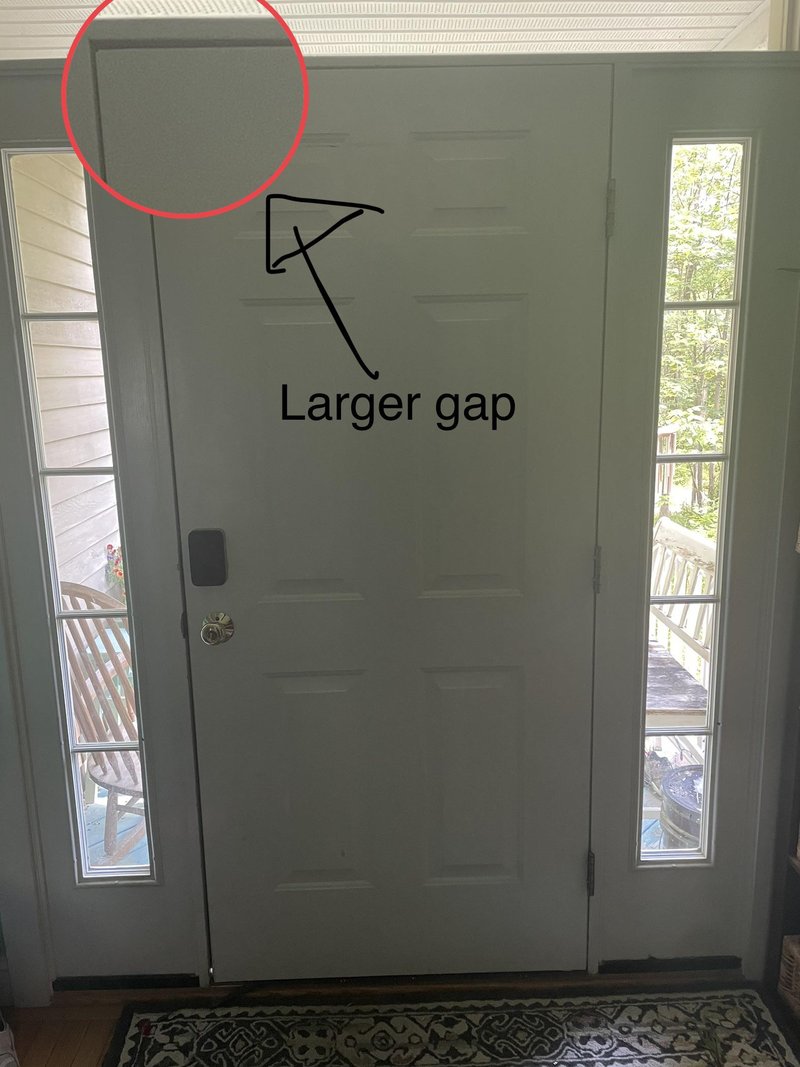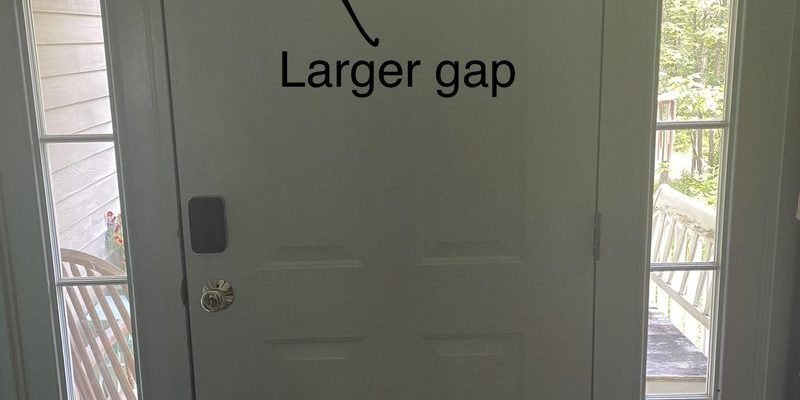
Here’s the thing: a misaligned door after foundation settling isn’t just annoying—it can lead to drafts, security issues, or water leaks if left unchecked. If you’ve never fixed this before, it might seem like you need a power tool in one hand and a PhD in physics in the other. Honestly, with a bit of patience and some basic know-how, you can get things working smoothly again. Let’s dig into what causes this problem, how to diagnose it, and the right steps to troubleshoot and fix a sagging or stubborn exterior door.
Why Foundation Settling Misaligns Exterior Doors
When a home settles, it means the ground underneath is compacting or shifting. This happens naturally as soil dries, gets wet, or reacts to big weather changes. Over time, these tiny movements in the foundation can throw your door frame just a tiny bit off. Suddenly, that solid, reliable door from Therma-Tru or Masonite is dragging at the bottom, or there’s daylight peeking through the top.
You might wonder, “Isn’t my house supposed to do this?” To a degree, yes. Most homes settle a little—especially new constructions or houses built on clay-heavy soil. But if settling is uneven, it pulls the frame out of square. Think of it like a paperback book: bend one corner, and every page above twists out of line. Your door is the same. Little shifts add up, and suddenly, gravity is working against you every time you try to close it.
Key insight: Even a 1/8-inch foundation shift can mean a door that won’t latch or barely closes at all.
This is more than just a cosmetic problem. A misaligned door means security risks—a sloppy latch can be forced open more easily. Plus, rain and bugs love any crack wide enough to squeeze through. Understanding how settling messes with your door is the first step to fixing it.
Common Signs Your Exterior Door Is Out of Alignment
So how do you know if your exterior door is misaligned because of settling and not just cheap hinges? There are a few obvious giveaways, and some sneaky ones, too.
- The door sticks, drags, or jams. It might scrape against the floor or catch at the top corner.
- Gaps appear around the frame. Sunlight or drafts sneak through, especially near the top or bottom.
- The latch or deadbolt won’t line up. Locking up suddenly gets tricky or impossible.
- Creaks, squeaks, or popping sounds when you open or close the door. The frame or door is under stress.
Here’s the thing: even a few millimeters of movement is enough to trigger these problems. If you’ve recently noticed one or more of these signs—especially after heavy rainfall or a dry spell—it’s a good bet your home is shifting. Sometimes, you’ll spot cracks in the nearby drywall or brick, hinting that settling has become a real player in your home’s story.
Don’t rush to blame the door brand or installer: even a perfectly installed JELD-WEN or Masonite door can’t fight physics. Spotting these signals early helps you fix misalignment before bigger problems set in.
How to Inspect a Misaligned Door After Settling
Before you start reaching for the level or wrench, it helps to carefully inspect what’s going on. A full check will save you time—and help you avoid guessing at the fix.
- Look for uneven gaps between the door and the frame. Are they wider at the top, bottom, or along one edge?
- Test the door’s motion. Open and close it slowly. Where does it stick or drag?
- Check the latch alignment. Does the lock snap into the strike plate cleanly, or is it hitting above or below?
- Use a carpenter’s level on the door and the frame. Check for plumb (vertical) and level (horizontal) lines.
Pro tip: If you have a tape measure, compare the gaps at the top and bottom when the door is closed. Differences of more than 1/8 inch usually mean the frame or the door itself is warped or shifted.
Go slow during this process. Sometimes, hinges are the culprit; sometimes, the whole frame is out of square. Take note of where you see trouble—this will help you target the right solution instead of fiddling blindly.
Quick Fixes for Minor Door Misalignment
Let me explain—sometimes, a misaligned exterior door only needs a little love at the hinges or strike plate. If settling is minor, you might not need a contractor or new door.
- Tighten all hinge screws. Even a 1/4-turn can help pull the door back into line.
- Replace stripped screws with longer ones (3-inch wood screws are great) for a better grip in the framing.
- Adjust the strike plate. If the latch doesn’t line up, you can sometimes file the hole larger or move the plate up or down.
- Use shims. For slightly sagging frames, thin wood shims behind the hinges or the frame can nudge things back square.
Here’s an example: Let’s say your Masonite door sticks at the top. Try unscrewing the top hinge from the frame, slipping in a cardboard shim behind the leaf, and re-tightening. This tiny move can lift the door just enough to clear the frame.
These tricks are ideal for small problems. If the door is still fighting you after these tweaks—or if the gaps are huge—your foundation may be to blame, and you’ll have to go deeper.
How to Fix Major Door Issues After Foundation Settling
If tightening hinges and shims did nothing, you’re likely dealing with bigger foundation shifts. Don’t panic—there are step-by-step ways to bring things back into line. Here’s how you can approach the repair:
- Re-square the door frame. Remove the door and trim (carefully), then re-shim or rebuild the frame so it’s level and plumb. This might mean adding or removing material behind the jamb.
- Rehang the door. With the frame square, hang the door back up. Check for even gaps on all sides before tightening the hinges all the way down.
- Fill or caulk gaps. If settling left you with daylight around the frame, use insulating foam or backer rod and weatherproof caulk to seal things up. This keeps out water and bugs.
- Reset or re-mortar brickmold or exterior trim. If your door frame sits in a brick or stone opening, you might have to chip out old mortar and set new trim to close gaps.
You might be wondering, “Do I need a professional?” If the whole house feels crooked, or doors and windows all show problems, it’s worth getting a pro to check your foundation. For one stubborn door, though, careful DIY is possible.
Bonus tip: Don’t forget to reset any alarms or smart locks after rehanging the door—they may need recalibration when the door fit changes.
When to Call a Foundation Expert
Here’s the tough truth: sometimes, a door that’s out of alignment is a sign of a much bigger problem. If you see deep cracks radiating from your door frame, or if the floor slopes dramatically, it’s time to bring in help.
Foundation repair isn’t a DIY afternoon—fixing the base of your house takes experience, special tools, and sometimes heavy equipment. If you ignore major settling, you risk more than a sticky door; you could see walls crack, pipes snap, or the whole structure shift further.
- Contact a licensed structural engineer if you see step cracks in bricks, doors/windows stuck throughout the house, or sudden changes after storms or droughts.
- Professional repair options include underpinning, mudjacking, or foam injection—each tailored to your soil and house design.
- Keep every repair invoice and report. If you ever sell, buyers will want proof you’ve handled issues correctly.
Don’t feel bad if you need a specialist. Some settling is inevitable, but it’s smarter to spend a little up-front than wait for major damage down the line.
Preventing Future Door Alignment Problems
Let’s talk prevention. Once you’ve fixed your misaligned exterior door, you probably never want to go through this hassle again. The good news? A few habits and checks will keep things working smoothly.
- Monitor your home’s foundation yearly. Look for new cracks indoors or outdoors, and note any door or window changes.
- Control moisture around your foundation. Make sure gutters direct water away, and don’t plant thirsty trees too close to the house.
- Maintain caulking and weatherstripping around doors and frames. Seal small gaps promptly to stop drafts and pests.
- Check and tighten hardware regularly. Catching a loose hinge early can prevent a year’s worth of wear.
Honestly, the soil under your house will keep moving a bit, but you don’t have to let it ruin your doors. Stay vigilant, and you’ll save yourself time, money, and frustration with every sticky season.
Choosing the Right Door for Settling-Prone Foundations
If your home sits in an area known for foundation movement, you might want to think carefully about the exterior door you choose. Not all doors and frames handle shifts the same. Here’s what matters:
- Steel doors (like those from Masonite or JELD-WEN) resist warping and stay rigid, but they’re less forgiving of frame movement.
- Fiberglass doors flex a little more and handle temperature swings well, but can crack under extreme shifting if not installed correctly.
- Wood doors look great but can swell, shrink, or twist with moisture changes, making them high-maintenance in a settling home.
- Adjustable threshold sills and wider weatherstripping give you flexibility if things move a bit in the future.
Let me be real: no door is “settling-proof.” But picking one with a stable frame, and adding some installer flexibility, means fewer headaches as the seasons change.
Closing Thoughts
Living with a shifting foundation can feel like playing whack-a-mole: just when you fix one door, another starts acting up. But with a bit of know-how and some strategic troubleshooting, you can keep your exterior doors swinging smoothly—even after settling tries to throw them off balance.
A misaligned door isn’t just a nuisance; it’s your home’s way of telling you something’s changed below. Trust your instincts, use a measured approach for fixes, and never be afraid to call in a pro if things get serious. With patience and attention, you’ll keep your home welcoming, secure, and comfortable—no matter what the ground decides to do next.
